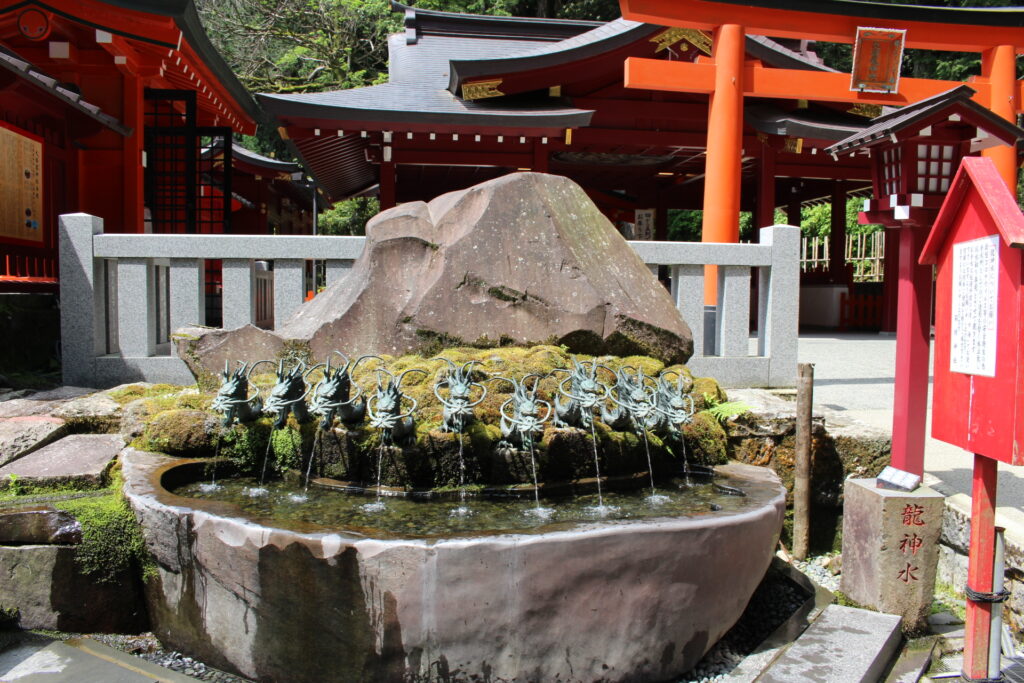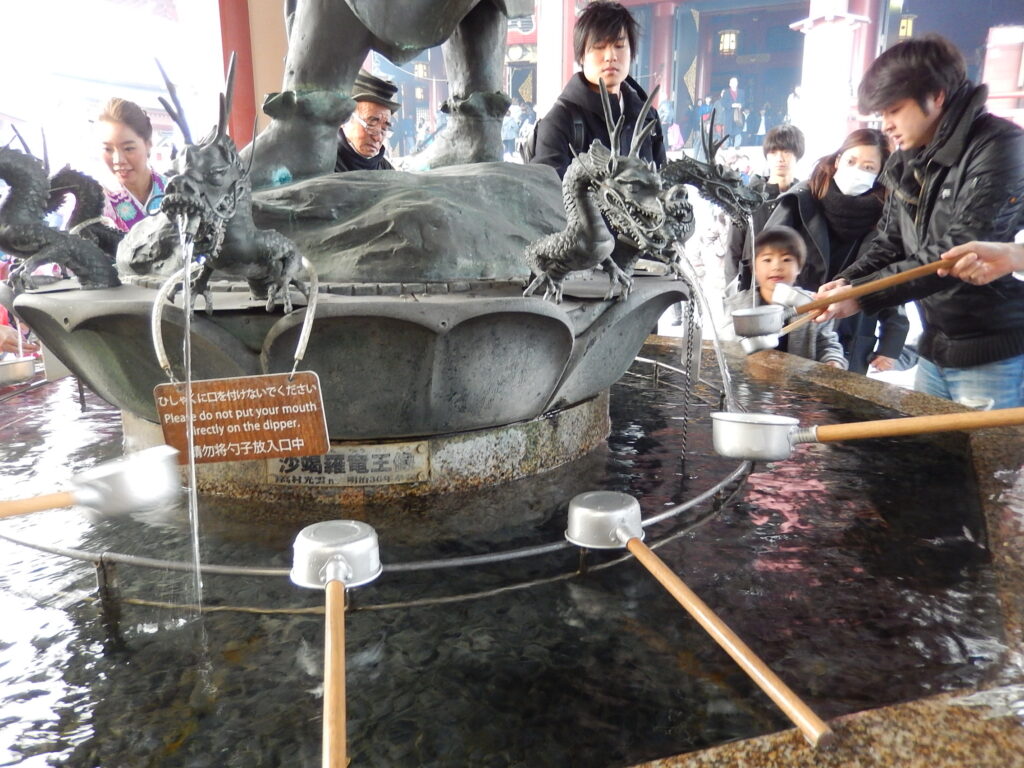When you enter the precinct of a Shinto Shrine or a Buddhist temple in Japan, you will usually find a purification fountain called “temizuya” in Japanese. Before going into a sacred area, all visitors should wash their hands and mouth there.
■ What is a Purification fountain?
The Purification fountain is usually an open area where clear water fills one or various stone basins. Wooden or metal dippers are available to visitors.
Water is being poured from the mouth of a dragon statue. This water is said to be holy water, because a dragon is believed to be a god of water in Japan.
This is a unique culture originally in China and then in Japan. In the western world, a dragon has been believed to be a fire-breathing creature, not a god of water.
■ How to purify
Visitors are asked to purify themselves at a purification fountain before entering the sacred area such as a main hall. The act of purification should be done as follows.
①Take one of the dippers and fill it with fresh water.
②Holding the dipper in your right hand, pour a bit of water on your left hand.
③Transfer the dipper to your left hand, then pour a bit of water on your right hand.
④Transfer the dipper back to your right hand and pour water into your cupped left hand.
⑤Then rinse your mouth out and spit out the water into the area provided.
⑥Pour water one more time over your left hand.
⑦Tilt the dipper up and let the remaining water pour over the dipper’s handle to clean for the next person.
■ Reason
It is said that our hands and mouth are the dirtiest parts of our body physically and mentally because you use these parts when you do something wrong to others.
Therefore, you should wash your hands and mouth before going into the sacred place of a shrine or a temple to ask something to the deity.
■ Caution
You are not supposed to transfer the water directly from the dipper into your mouth or swallow the water for a sanitary reason.
In this situation when we are worried about the corona virus, we had better omit washing mouth and even hands.


■ Others
The pictures shows the purification fountain of the Hakone Shrine in Hakone and the Sensoji temple in Asakusa, Tokyo.
Ref. A complete guide to Japanese culture and scenic spots in English (written by Ueda, published by Goken)
Written by Eddy Murayama
—

Comment